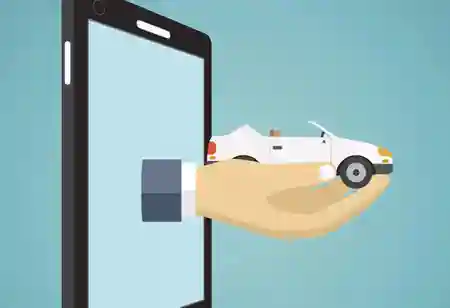THANK YOU FOR SUBSCRIBING
THANK YOU FOR SUBSCRIBING
Be first to read the latest tech news, Industry Leader's Insights, and CIO interviews of medium and large enterprises exclusively from Auto Tech Outlook

By
Auto Tech Outlook | Tuesday, October 26, 2021
Stay ahead of the industry with exclusive feature stories on the top companies, expert insights and the latest news delivered straight to your inbox. Subscribe today.
While digital technologies are beginning to alter how consumers buy vehicles fundamentally, manufacturers and dealers should exercise caution in determining where to spend to improve the customer experience.
FREMONT, CA: Digital revolution is reshaping a diverse range of sectors. People’s lifestyles are beginning to undergo fundamental changes as a result of technological advancements. Automobile purchases are hardly an exception. Modern clients are well informed about the vehicles they are considering, and when the time comes to visit a dealership, they know exactly what they want.
However, purchasing a car is frequently a pretty natural transaction. The automotive buyers must climb inside, lay their hands on the wheel, and take a test drive to make purchasing decisions. While digital channels may provide all necessary information, the act of physically operating an automobile cannot be substituted at the moment.
Nonetheless, if dealers want to deliver the greatest possible car-buying experience, they must use these well-informed clients and establish a personal connection with them. Consumers now increasingly demand this level of personalization across all brand interactions.
Integrating modern digital technology into the purchasing process is an excellent method for the automobile sector to address this problem and rising expectations.
Automobile manufacturers and dealers have chosen to spend heavily on consumer-oriented digital technology. These include tablet-based product guides and virtual reality applications, all of which are designed to boost client interaction on the showroom floor.
On the other hand, manufacturers' objectives for digital transformation are distinct from those of dealers. Dealers are increasingly focusing on rapid digital solutions to minimize overhead, enhance operational efficiency, and increase transparency and eliminate salesperson friction. They require tactical ones to facilitate the flow of information across the dealership.
Customer influence and information flow are primarily via digital channels.
The RoPo phenomenon is a current buying trend—this is “research online, buy offline.” Investing in internet marketing generates offline income. This is especially true for long-term expenditures like cars. Most vehicle buyers begin their search online. Of course, visiting a dealer in person still provides the most information. Car manufacturer websites are vital. Then comes a look at the dealers' online alternatives and an evaluation. This implies dealers and manufacturers should have fantastic websites and an excellent social media strategy. Their web presence may be crucial to their sales; therefore, they must continually adapt to new technology advancements.
The Modern Clients.
Modern customers like new digital features. Installing test-drive simulators and life-size configurators save showroom space and increases upsell possibilities. These allow buyers to see all the current mass customization trends’ choices and learn more about their favorite models.
A digital future awaits car buyers.
The evolution of automobile retail will take a variety of forms. The digital revolution is refocusing attention on a more technologically advanced and individualized car-buying experience.
Manufacturers and dealers will have to decide how to cope with knowledgeable modern customers and today's digitalized environment, from establishing digital internet channels to radically restructuring retail networks.
Check Out: Retail Business Review Magazine
 Copyright © 2025 AutoTech Outlook. All Rights Reserved | Privacy Policy | Subscribe | Sitemap | About us | Feedback Policy | Editorial Policy
Copyright © 2025 AutoTech Outlook. All Rights Reserved | Privacy Policy | Subscribe | Sitemap | About us | Feedback Policy | Editorial Policy 



